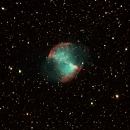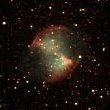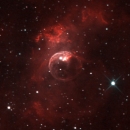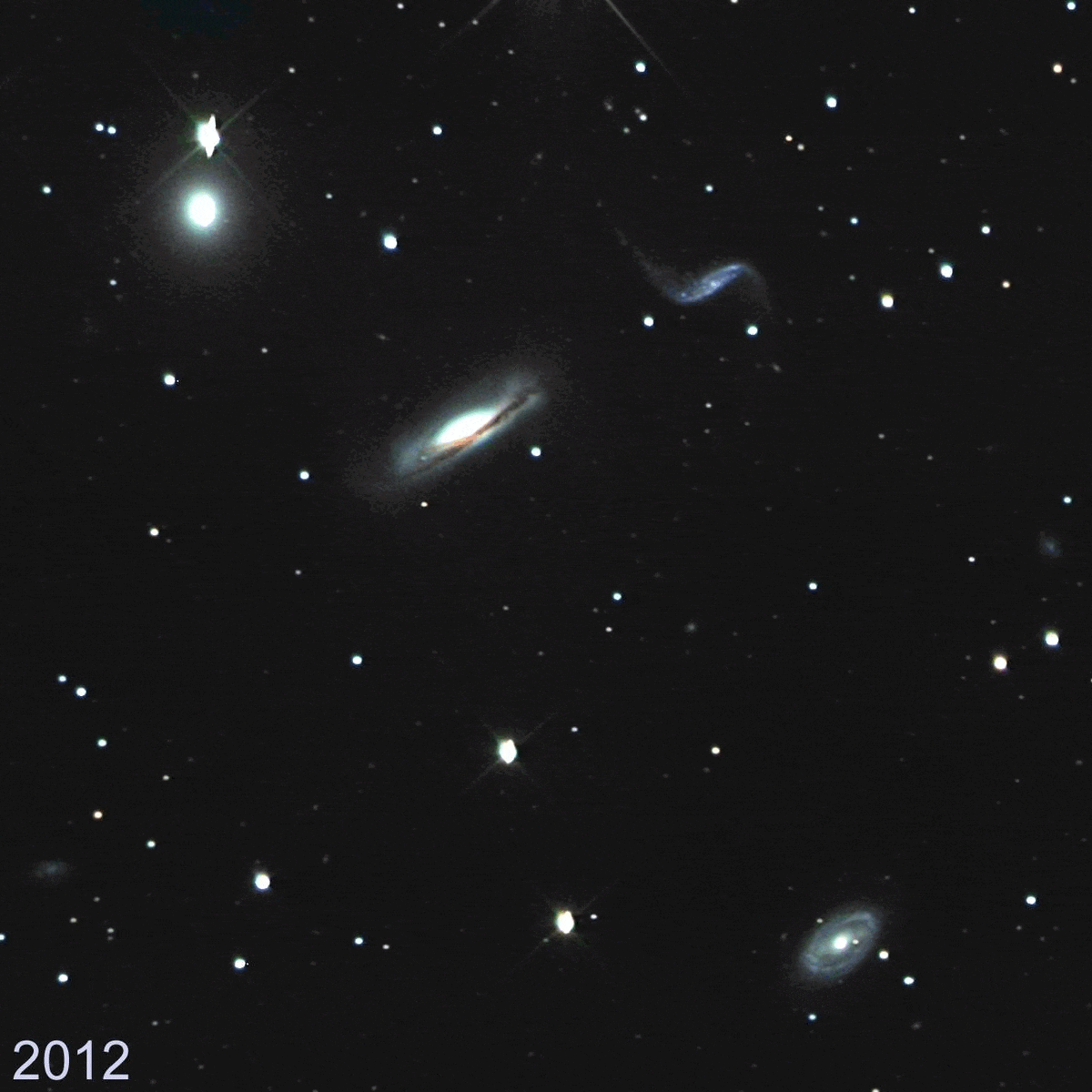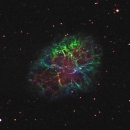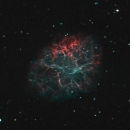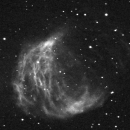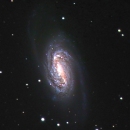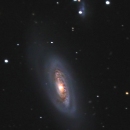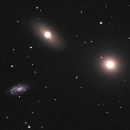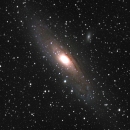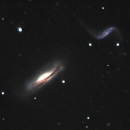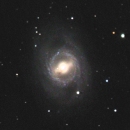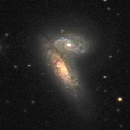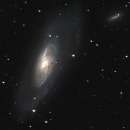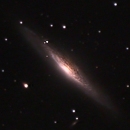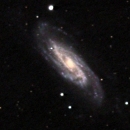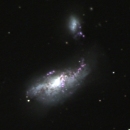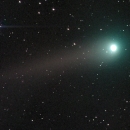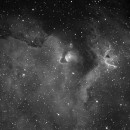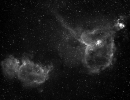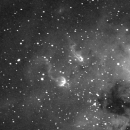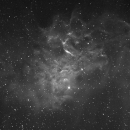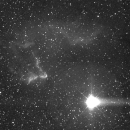|
Dumbbell nebula revisited with H-alpha and OIII filters. I've copied earlier photographs of the Dumbbell nebula that were taken with RGB-filters (2007) and the FTF1020C colour CCD (2000, now out-of-use).
|
|
Coincidentally I photographed M101 on 17 May 2023, two days before supernova SN2023ixf was discovered. On 19 may I could confirm the supernova during a short break in the clouds. The wheather cleared on 24 May and the few astronomically dark hours enabled me to photograph M101 and SN2023ixf in L and RGB. Below the results shown in different ways. Image information: Equipment: 25cm Newton f/D=5.7 with FTT1010M CCD and RGB filterwheel Sub-image exposures: 17 May: Luminance 15*120sec 24 May: Luminance 30*120sec 25 May: RGB 30*120sec eachFoV: 0.48x0.44 deg |
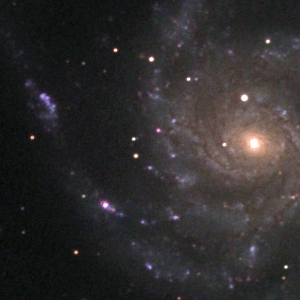
|
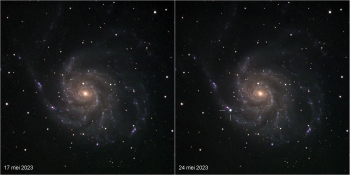
|
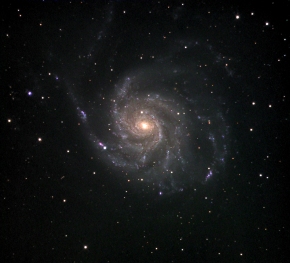
|
| Gif switching between 17 and 24/25 May 2023 |
17 May and 24 May side by side | Sum of 17 and 24/25 May images |
|
M42 imaged with SII, H-alpha and OIII narrow-band filters (Baader Planetarium, 6.5-8.5nm bandwidth), shown in three different ways. To the left H-alpha is shown in Red while the OIII image is distributed over Green (100%) and Blue (100%) to obtain the characteristic teal colour. The middle image has the same colour assignment and is unsharp masked, i.e. the luminance of the image was devided by a smoothed version of itself, lowering the intensity of the central part of the nebula and revealing the (nearly overexposed) trapezium star cluster. The image to the right shows M42 with H-alpha again assigned to Red (150%), S-II to Green (400%) and OIII to Green (80%) and Blue (100%). In order to have a clear effect, the Sulfur contribution had to be increased 4-fold. Images are obtained on february 8, 2023, with the FTT1010-M CCD camera and the f/D=3.5 Newton configuration described below (and in the equipment section, see here). M42 is a relatively bright object and for H-alpha and OIII short, 60-second exposures were needed to avoid overexposure of the central part: H-alpha 19x60 seconds, OIII 30x60seconds. The Sulfur contribution is much weaker and 16 exposures of 120 seconds were acquired. The images cover a 0.8x0.8 degree field of view, are sharpened and shown with a gamma of 2.2. The luminance is based on the (photopic) eye sensitivity for the H-alpha wavelength (656nm: sensitivity 0.08) and OIII wavelength (501nm: sensitivity 0.34). Thus L=0.08*H-alpha+0.34*OIII. |
Horse nebula HOO 14/27/28 february 2023 H-alpha 155x2min OIII 95x2min FoV 0.73x0.73 degrees Gamma 2.0 Intenser red contributions are shown with increasing whiter appearance The image is sharpened and rotated 90-degrees (CCW) |
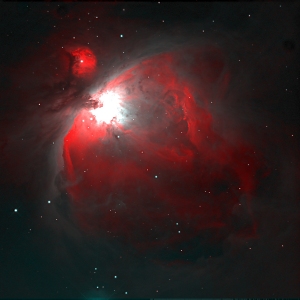 |
 |
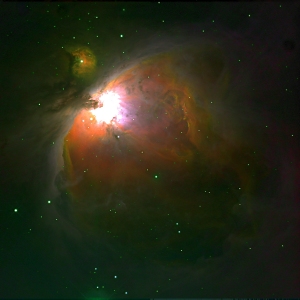 |
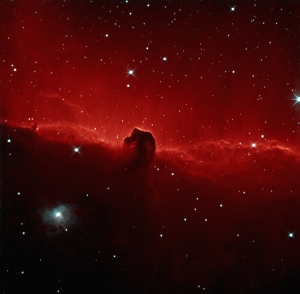 |
| M42, HOO | M42, HOO, Unsharp masked. |
M42, HSO | Horsehead nebula |
|
Images obtained with the FTT1010-M CCD camera and my latest Newton telescope. In fact it is a modified Cassegrain telescope with a 25cm, f=1091mm primary. By adding a
plane-convex lens close to the CCD the effective focal length is reduced to f=880mm and the f/D is improved from 4.3 to 3.5. Without this lens, coma of the parabolic primary over the 12mmx12mm focal plane of the CCD is substantial. The plano-convex lens reduces coma and increases sensitivity by some 50% (which compensates for the relatively low quantum efficiency of the CCD's I'm (still) using). For more details click here. The images are cropped to 0.5x0.5 degrees of the 0.8x0.8 degrees field of view. The bandwidth of the H-alpha and OIII filters are 6.5nm and 8.5nm (Baader-Planetarium). |
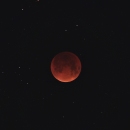 |
ECLIPSED MOON IN PISCES STAR FIELD September 28, 2015 300mm Tele-objective F#4.0 FTF2020-M CCD RGB-filter wheel Eclipsed Moon: 2 sec RGB Star field: 30 sec RGB FoV: 4.7x3.5 degrees |
| Images made with the FTF2020-M CCD camera equipped with a Baader H-alpha filter (7nm bandwidth) and with either the 25cm Newton using a simple coma-corrector, resulting in f/D=4.7, or a Leica f=300mm teleobjective at F#4. |

